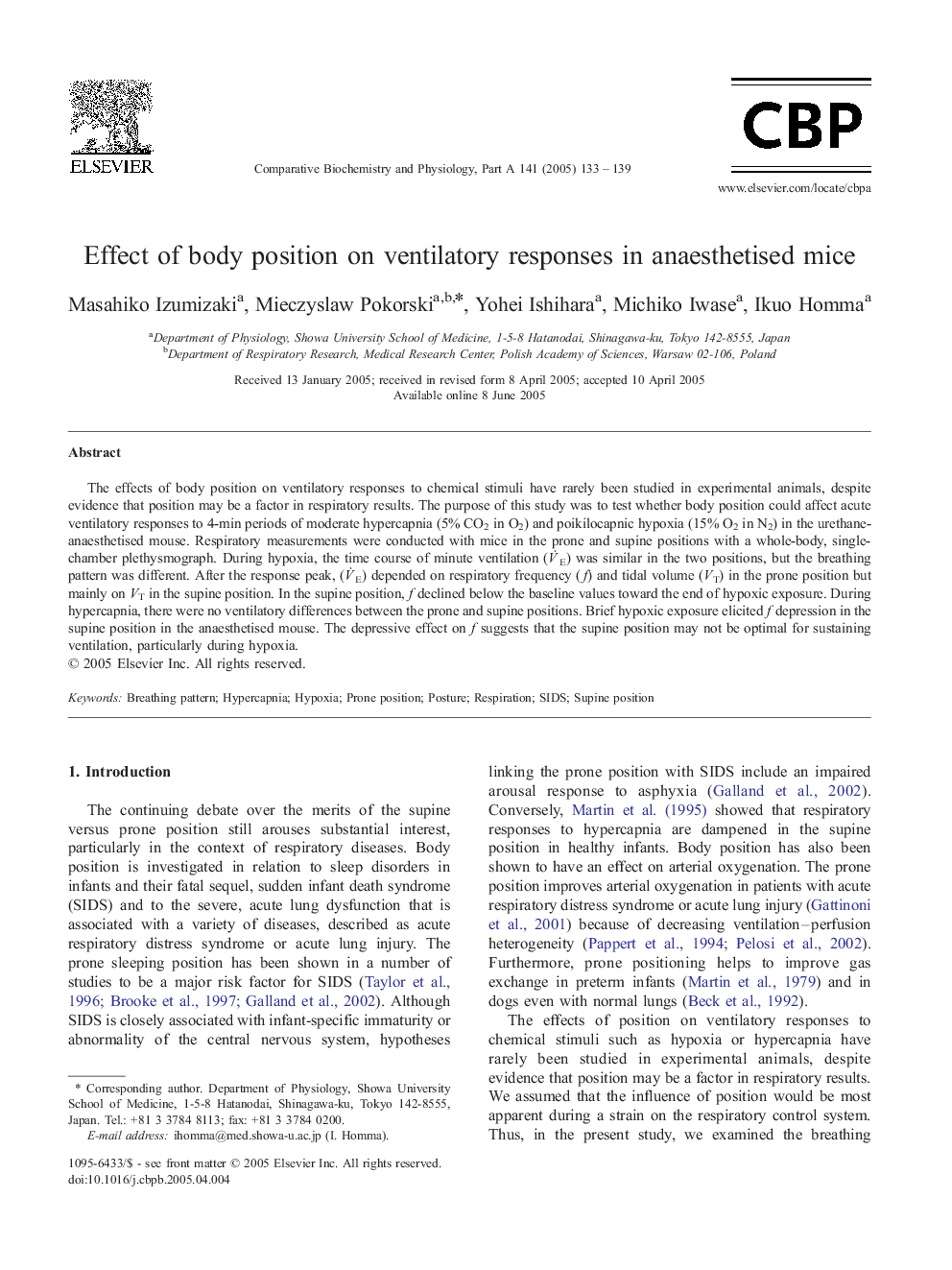| Article ID | Journal | Published Year | Pages | File Type |
|---|---|---|---|---|
| 10819192 | Comparative Biochemistry and Physiology Part A: Molecular & Integrative Physiology | 2005 | 7 Pages |
Abstract
The effects of body position on ventilatory responses to chemical stimuli have rarely been studied in experimental animals, despite evidence that position may be a factor in respiratory results. The purpose of this study was to test whether body position could affect acute ventilatory responses to 4-min periods of moderate hypercapnia (5% CO2 in O2) and poikilocapnic hypoxia (15% O2 in N2) in the urethane-anaesthetised mouse. Respiratory measurements were conducted with mice in the prone and supine positions with a whole-body, single-chamber plethysmograph. During hypoxia, the time course of minute ventilation (VËE) was similar in the two positions, but the breathing pattern was different. After the response peak, VËE depended on respiratory frequency (f) and tidal volume (VT) in the prone position but mainly on VT in the supine position. In the supine position, f declined below the baseline values toward the end of hypoxic exposure. During hypercapnia, there were no ventilatory differences between the prone and supine positions. Brief hypoxic exposure elicited f depression in the supine position in the anaesthetised mouse. The depressive effect on f suggests that the supine position may not be optimal for sustaining ventilation, particularly during hypoxia.
Related Topics
Life Sciences
Biochemistry, Genetics and Molecular Biology
Biochemistry
Authors
Masahiko Izumizaki, Mieczyslaw Pokorski, Yohei Ishihara, Michiko Iwase, Ikuo Homma,
